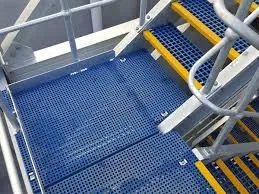
-
 Afrikaans
Afrikaans -
 Albanian
Albanian -
 Amharic
Amharic -
 Arabic
Arabic -
 Armenian
Armenian -
 Azerbaijani
Azerbaijani -
 Basque
Basque -
 Belarusian
Belarusian -
 Bengali
Bengali -
 Bosnian
Bosnian -
 Bulgarian
Bulgarian -
 Catalan
Catalan -
 Cebuano
Cebuano -
 China
China -
 China (Taiwan)
China (Taiwan) -
 Corsican
Corsican -
 Croatian
Croatian -
 Czech
Czech -
 Danish
Danish -
 Dutch
Dutch -
 English
English -
 Esperanto
Esperanto -
 Estonian
Estonian -
 Finnish
Finnish -
 French
French -
 Frisian
Frisian -
 Galician
Galician -
 Georgian
Georgian -
 German
German -
 Greek
Greek -
 Gujarati
Gujarati -
 Haitian Creole
Haitian Creole -
 hausa
hausa -
 hawaiian
hawaiian -
 Hebrew
Hebrew -
 Hindi
Hindi -
 Miao
Miao -
 Hungarian
Hungarian -
 Icelandic
Icelandic -
 igbo
igbo -
 Indonesian
Indonesian -
 irish
irish -
 Italian
Italian -
 Japanese
Japanese -
 Javanese
Javanese -
 Kannada
Kannada -
 kazakh
kazakh -
 Khmer
Khmer -
 Rwandese
Rwandese -
 Korean
Korean -
 Kurdish
Kurdish -
 Kyrgyz
Kyrgyz -
 Lao
Lao -
 Latin
Latin -
 Latvian
Latvian -
 Lithuanian
Lithuanian -
 Luxembourgish
Luxembourgish -
 Macedonian
Macedonian -
 Malgashi
Malgashi -
 Malay
Malay -
 Malayalam
Malayalam -
 Maltese
Maltese -
 Maori
Maori -
 Marathi
Marathi -
 Mongolian
Mongolian -
 Myanmar
Myanmar -
 Nepali
Nepali -
 Norwegian
Norwegian -
 Norwegian
Norwegian -
 Occitan
Occitan -
 Pashto
Pashto -
 Persian
Persian -
 Polish
Polish -
 Portuguese
Portuguese -
 Punjabi
Punjabi -
 Romanian
Romanian -
 Russian
Russian -
 Samoan
Samoan -
 Scottish Gaelic
Scottish Gaelic -
 Serbian
Serbian -
 Sesotho
Sesotho -
 Shona
Shona -
 Sindhi
Sindhi -
 Sinhala
Sinhala -
 Slovak
Slovak -
 Slovenian
Slovenian -
 Somali
Somali -
 Spanish
Spanish -
 Sundanese
Sundanese -
 Swahili
Swahili -
 Swedish
Swedish -
 Tagalog
Tagalog -
 Tajik
Tajik -
 Tamil
Tamil -
 Tatar
Tatar -
 Telugu
Telugu -
 Thai
Thai -
 Turkish
Turkish -
 Turkmen
Turkmen -
 Ukrainian
Ukrainian -
 Urdu
Urdu -
 Uighur
Uighur -
 Uzbek
Uzbek -
 Vietnamese
Vietnamese -
 Welsh
Welsh -
 Bantu
Bantu -
 Yiddish
Yiddish -
 Yoruba
Yoruba -
 Zulu
Zulu
fiber reinforced plastic tank
Fiber Reinforced Plastic Tanks An Overview
Fiber reinforced plastic (FRP) tanks have gained significant popularity across various industries due to their exceptional strength-to-weight ratio, corrosion resistance, and versatility. These tanks are increasingly being utilized for storing liquids, chemicals, and other materials, making them an essential component in modern infrastructure.
What is Fiber Reinforced Plastic?
Fiber reinforced plastic is a composite material made from a polymer matrix reinforced with fibers. Common fibers used in FRP include glass, carbon, and aramid, while the polymer matrix is typically made from materials like epoxy, polyester, or vinyl ester. The combination of these materials provides a balance of flexibility, stiffness, and durability, which is ideal for a wide range of applications.
Advantages of FRP Tanks
1. Corrosion Resistance One of the standout features of FRP tanks is their resistance to corrosion. Unlike traditional materials like steel or concrete, FRP does not rust or degrade when exposed to harsh chemicals or moisture. This property is particularly beneficial in industries such as wastewater treatment, chemical processing, and food storage, where exposure to corrosive substances is common.
2. Lightweight FRP tanks are much lighter than their steel or concrete counterparts. This not only simplifies transportation and installation but also reduces the structural loads on supports and foundations. The lightweight nature allows for a more straightforward design and construction process, which can lead to overall cost savings.
3. Customization FRP tanks can be manufactured in various shapes and sizes tailored to meet specific requirements. This flexibility allows for customized solutions for various applications, from small-scale uses in laboratories to large tanks for industrial processes.
4. Durability The robust nature of fiber reinforced plastic means that these tanks can withstand significant impacts and extreme environmental conditions. They are designed to have a long lifespan, minimizing the need for frequent replacements or maintenance.
fiber reinforced plastic tank

5. Thermal Insulation FRP has excellent thermal insulation properties, making it suitable for storing liquids that need temperature regulation. The insulating properties of FRP can help maintain the desired temperature of the contents, which is crucial for certain chemical processes or food storage.
Applications
The versatility of FRP tanks means they can be used in various sectors, including
- Chemical Industry Used for storing acids, alkalis, and other hazardous materials due to their corrosion resistance and strength. - Water and Wastewater Treatment Used in treatment plants for storing treated and untreated water, as well as in various treatment processes. - Food and Beverage Employed in the storage of liquids within the food industry, ensuring safety and sanitation standards are maintained. - Agriculture Commonly used for storing fertilizers and other agricultural chemicals.
Future Trends
As technology advances, the production processes for FRP tanks are becoming more efficient, leading to lower costs and improved quality. Additionally, sustainability is becoming a key focus across industries. The use of eco-friendly resins and recycled fibers is helping to minimize the environmental impact of FRP tanks. This trend is likely to continue as businesses aim to align their operations with sustainable practices.
Conclusion
Fiber reinforced plastic tanks represent an innovative solution for many storage needs across various industries. Their lightweight, durable, and corrosion-resistant characteristics position them as a superior alternative to traditional storage options. As industries seek to enhance efficiency and sustainability, the utilization of FRP tanks is expected to rise, paving the way for a more resilient and adaptable storage infrastructure for the future.
Latest news
-
Exploring the Benefits of Top Hammer Drifter Rods for Enhanced Drilling PerformanceNewsJun.10,2025
-
High-Precision Fiberglass Winding Machine for GRP/FRP Pipe Production – Reliable & Efficient SolutionsNewsJun.10,2025
-
FRP Pipes & Fittings for Shipbuilding - Corrosion-Resistant & LightweightNewsJun.09,2025
-
Premium FRP Flooring Solutions Durable & Slip-ResistantNewsJun.09,2025
-
Premium Fiberglass Rectangular Tanks Durable & Lightweight SolutionNewsJun.09,2025
-
Tapered Drill String Design Guide Durable Performance & UsesNewsJun.09,2025









